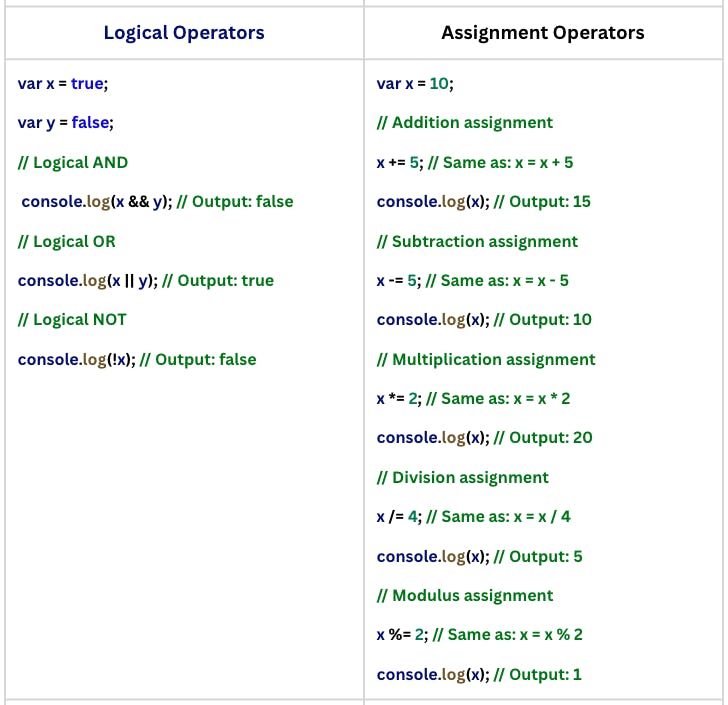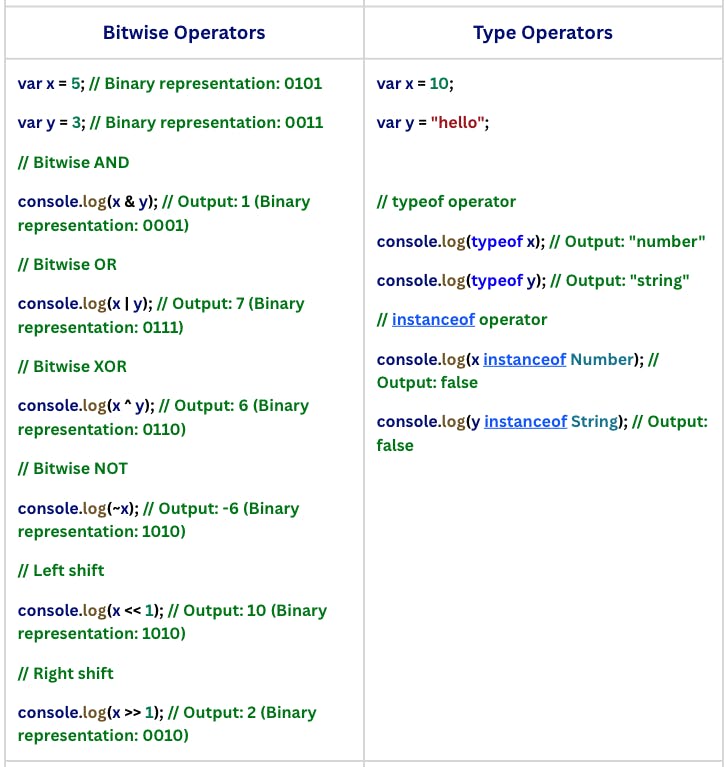1.1 - Introduction to the History and Uses of JavaScript
JavaScript is a popular programming language used primarily for creating interactive web pages and web applications. In this lesson, we'll cover the history and uses of JavaScript and why it's an important language to learn.
History of JavaScript
JavaScript was created by Brendan Eich in just 10 days in May 1995 while he was working at Netscape Communications Corporation. It was initially called Mocha, then changed to LiveScript, and finally settled on the name JavaScript.

The language was created to add interactivity to web pages, which were mostly static at the time. Netscape wanted a way to create dynamic pages that could respond to user input, such as clicking a button or filling out a form. JavaScript was the perfect solution because it allowed developers to add functionality to their pages without relying on server-side technologies.
Over time, JavaScript became the de facto language for front-end web development. It's now used in a variety of contexts, including server-side development, mobile app development, and even desktop applications.
Uses of JavaScript
JavaScript is used for a variety of purposes, including:
Enhancing User Experience: JavaScript is used to add interactivity to web pages, such as dropdown menus, image sliders, and form validation. This makes web pages more engaging and user-friendly.
Web Development: JavaScript is used extensively in front-end web development to create dynamic and responsive user interfaces. It's also used on the server-side with Node.js to create scalable and efficient web applications.
Mobile App Development: With the rise of hybrid and cross-platform mobile app development, JavaScript has become a popular language for building mobile apps. Frameworks like React Native and Ionic allow developers to use JavaScript to create native mobile apps for iOS and Android.
Game Development: JavaScript is used to create web-based games and interactive animations. Frameworks like Phaser and Three.js make it easy to create games and graphics using JavaScript.
Desktop Application Development: With the advent of frameworks like Electron, JavaScript can now be used to create desktop applications that run on Windows, Mac, and Linux.
JavaScript is a powerful and versatile language that has come a long way since its creation in 1995. It's now an essential language for web development, mobile app development, game development, and more. As a beginner, understanding the history and uses of JavaScript can help you appreciate the language's capabilities and its importance in the world of technology.
1.2 - Understanding the Role of JavaScript in Web Development
JavaScript is a versatile programming language that plays a significant role in web development. In this lesson, we'll discuss the role of JavaScript in web development and how it can enhance the functionality and user experience of web applications.
Client-Side vs. Server-Side Code
To understand the role of JavaScript in web development, it's essential to know the difference between client-side and server-side code.
Client-side code refers to code that runs in the user's browser, such as HTML, CSS, and JavaScript. This code is responsible for the visual elements and interactivity of web pages.
Server-side code, on the other hand, refers to code that runs on the server, such as PHP, Ruby, or Python. This code is responsible for handling requests, accessing databases, and generating dynamic content that's sent to the user's browser.
Role of JavaScript in Web Development
JavaScript plays a crucial role in client-side web development. Here are some of the ways JavaScript is used to enhance the functionality and user experience of web applications:
Adding Interactivity: JavaScript is used to add interactivity to web pages. This includes features like dropdown menus, pop-up boxes, and sliders. JavaScript allows developers to create dynamic user interfaces that respond to user input in real-time.
Validating User Input: JavaScript can be used to validate user input in web forms. This ensures that users enter valid data and reduces errors in data submission.
Enhancing User Experience: JavaScript can be used to enhance the user experience of web applications. This includes features like infinite scrolling, lazy loading, and animations.
Creating Single-Page Applications: JavaScript is used to create single-page applications (SPAs) that load all the necessary content on a single web page. This creates a faster and smoother user experience as users don't have to wait for multiple page reloads.
Implementing AJAX: AJAX (Asynchronous JavaScript and XML) is a technique used to send and receive data from a server without reloading the web page. JavaScript is used to implement AJAX, which makes web applications faster and more responsive.
JavaScript is a powerful client-side programming language that plays a critical role in web development. It's used to add interactivity, validate user input, enhance the user experience, create single-page applications, and implement AJAX. Understanding the role of JavaScript in web development is essential for any web developer looking to create dynamic and engaging web applications.
1.3 - Exploring the Basic Syntax and Structure of JavaScript Code
JavaScript code is written using a specific syntax and structure. In this lesson, we'll explore the basics of JavaScript syntax and structure, including variables, data types, operators, and control flow statements.
Variables
Variables are used to store data values in JavaScript. To create a variable, we use the var, let, or const keyword followed by the variable name and the value we want to assign to it.
For example, to create a variable called message and assign it the value of "Hello, world!", we can write:
var message = "Hello, world!";
Data Types
JavaScript supports several data types, including strings, numbers, booleans, arrays, and objects. To declare a string, we use double or single quotes, like so:
var name = "John";
To declare a number, we simply use the number itself:
var age = 30;
Operators
JavaScript supports several operators, including arithmetic operators (+, -, *, /), comparison operators (==, !=, >, <, >=, <=), and logical operators (&&, ||, !).
For example, to add two numbers together, we can use the addition operator, like so:
var sum = 2 + 2;
Let's explore each JS operator with code examples for each 👍




Control Flow Statements
Control flow statements are used to control the flow of execution in JavaScript. There are several control flow statements in JavaScript, including if/else statements, switch statements, and loops.
For example, to check if a variable called age is greater than or equal to 18 and display a message if it is, we can use an if/else statement, like so:
var age = 20;
if (age >= 18) {
console.log("You are an adult.");
} else {
console.log("You are not an adult yet.");
}
In this lesson, we explored the basics of JavaScript syntax and structure, including variables, data types, operators, and control flow statements. Understanding the basic syntax and structure of JavaScript code is essential for any web developer looking to create dynamic and interactive web applications. With this knowledge, you can begin to write simple JavaScript programs and explore more advanced concepts in future lessons.